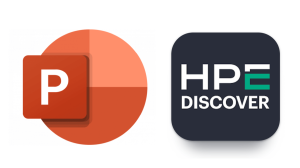German ISPsare considering the introduction of TrustPid, a new type of “supercookie” that comprises of a unique identifier which will be issued for each customer that will be able to track what that customer is doing online.
The providers are trying to sell this idea by telling the public that the identifier can never be tracked back to an individual and that something needs to be done to keep the internet free.
The end of the tracking cookie
Where does this attempt come from, you may ask. Advertisers are seeing the end of the tracking cookie on the horizon and it’s coming closer.
Google has announced that it will stop the use of third-party cookies in Chrome by the end of 2023, joining a growing list of browsers that are saying farewell to the tracking cookies. And Apple already blocks default tracking everywhere.
Social media and tech giants, including Google, are already looking at other business models to replace tracking cookies since they are the ones that benefited the most from targeted advertising, by providing the most useful information to the advertisers.
What makes supercookies different is that they are unique identifiers that are inserted into the HTTP header by a service provider. Unlike normal cookiesthey do not get stored in browsers or browser plug-ins.
Free internet
The idea of a free internet—as communicated by some of these companies—is not that they are signing you up as a customer free of charge. Wouldn’t that be nice? No, the idea is that websites that are providing content need to make a living. And the usual income for most of those sites comes from advertising. Why the ISP providers feel that it is part of their job description to enable targeted advertising escapes me. But undoubtedly the goal is to improve the bottom line.
Targeted advertising is more rewarding than regular advertising since it supposedly enormously enhances the effect of the advertisement. At least, that’s the idea that most advertisers live by, and sell to their customers. But here’s something to consider: According to research by Cloudflare, 20 percent of websites that serve ads receive visits almost exclusively by fraudulent click bots, and that bots comprise roughly 50 percent of all Internet traffic. Imagine how much money advertisers could save by effectively tackling ad fraud. Plus, that sounds a lot better than tagging another tracker on us.
Hiding consent
The worst bit of your ISP enabling the tracking is that every user has to sign some sort of agreement with them. In this agreement the ISP can hide the TrustPid consent in a long End-user License Agreement (EULA) that almost no-one ever reads and which can probably not be declined partially. It’s all or nothing if you want or need this provider. And if one provider successfully monetizes this idea, I’m afraid others will quickly follow suite.
Another advantage of an ISP is that they know if and when the IP of your home connection changes and for mobile devices they can even enumerate the users within a household by identifying the individual devices.
History
The idea of ISPs issuing supercookies is certainly not new. Verizon was the example that should have served as a history lesson here. In 2016, Verizon had to settle with the FCC over its use of a supercookie, which tracked the websites visited by phones on its network. They were fined because they forgot to inform the customers or give them an opt-out option. Verizon had to pay a fine of $1.35 millionand was ordered to receive customer permission before sharing tracking data with other companies or even within its own organization.
How it works
The network provider will first combine your mobile number and IP address to generate a pseudonymous network identifier, after which using that identifier they will generate a pseudonymous unique token (TrustPid).
This TrustPid is used to create additional marketing tokens for the websites of advertisers and publishers you visit (website specific tokens). Advertisers and publishers aren’t (shouldn’t be) able to identify you as a person via the website specific tokens.
Where you have given consent, advertisers and publishers will use the website specific tokens to provide you with targeted online marketing, or conduct analytics. The advertisers and publishers that you’ve consented to could be drawn up in a list that will be in the hands of the ISP, but you can manage your consent for those parties at any time via the Privacy Portal.
I inserted the “shouldn’t be” since we are all too aware that many good intentions have unexpected consequences. Let’s suppose that you fill out your details on one of the websites that you decided to trust. Introduce one XSS vulnerabilityand all your personal details could be linked back to your TrustPid.
Mitigation
Because of the lack of technical details provided about TrustPid, we are not completely clear how a user can avoid being tracked. But I asked German privacy expert Andreas Dewesand he responded:
“a device level VPN with integrated DNS should be able to block this kind of tracking.”
Once we know more, there might be easier and simpler ways to get around this. We’ll keep you posted.










